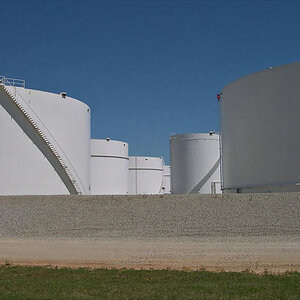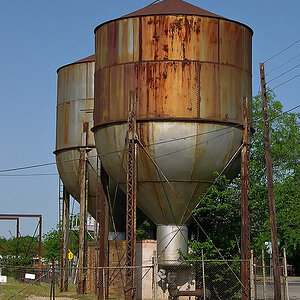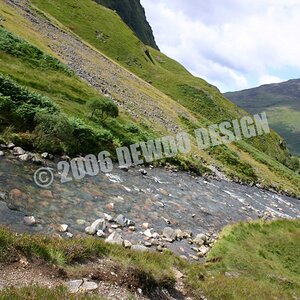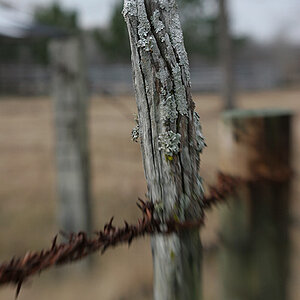Navigation
Install the app
How to install the app on iOS
Follow along with the video below to see how to install our site as a web app on your home screen.

Note: This feature currently requires accessing the site using the built-in Safari browser.
More options
You are using an out of date browser. It may not display this or other websites correctly.
You should upgrade or use an alternative browser.
You should upgrade or use an alternative browser.
Best Black&White Film
- Thread starter Stan (AG)
- Start date
Steph
No longer a newbie, moving up!
- Joined
- Oct 18, 2006
- Messages
- 1,314
- Reaction score
- 0
- Location
- Steventon, Oxfordshire, UK
- Can others edit my Photos
- Photos NOT OK to edit
There is no such thing as a best B&W film. What are you after in the final image? The results will depends on the film, how you develop it and how you print the negatives. It is really a matter of taste and trying to find out what you like.
doobs
TPF Noob!
- Joined
- Oct 7, 2007
- Messages
- 566
- Reaction score
- 0
- Location
- Sacramento, CA
- Website
- flickr.com
- Can others edit my Photos
- Photos OK to edit
I would suggest Ilford's HP5 or Kodak's T-Max 400 for a beginner. As Steph said, it really is a matter of opinion. I'd suggest Delta 400 when you become more advanced, as well.
Helen B
TPF Noob!
- Joined
- Sep 16, 2007
- Messages
- 3,296
- Reaction score
- 467
- Location
- Hell's Kitchen, New York
- Can others edit my Photos
- Photos NOT OK to edit
I agre with Steph. If you want suggestions then here are some highly simplified, and hence dangerous, generalisations:
For tolerance in exposing and processing: HP5+ and Tri-X
For less tolerance, but slightly lower graininess: T-Max 400 and Delta 400
For overall ease of use, smoothness and ease of scanning: XP-2 and BW400CN. These are dye-image films that can be developed in colour chemicals - C-41. XP2 is generally better for printing onto normal B&W paper, which BW400CN is designed for printing onto colour paper.
Best,
Helen
For tolerance in exposing and processing: HP5+ and Tri-X
For less tolerance, but slightly lower graininess: T-Max 400 and Delta 400
For overall ease of use, smoothness and ease of scanning: XP-2 and BW400CN. These are dye-image films that can be developed in colour chemicals - C-41. XP2 is generally better for printing onto normal B&W paper, which BW400CN is designed for printing onto colour paper.
Best,
Helen
Alpha
Troll Extraordinaire
- Joined
- Mar 15, 2005
- Messages
- 5,451
- Reaction score
- 41
- Location
- San Francisco
- Can others edit my Photos
- Photos NOT OK to edit
Tri-X has the most linear density curve and the most latitude for exposing and processing.
Neopan 400 would also be an excellent choice.
There's not really any such thing as a forgiving film. Either you expose and process correctly or you don't. Your errors will show up either way. Best to pick a film that has the qualities you like and just run with it.
As other have said, there's really no "best" film. Try a few and see what you like.
Neopan 400 would also be an excellent choice.
There's not really any such thing as a forgiving film. Either you expose and process correctly or you don't. Your errors will show up either way. Best to pick a film that has the qualities you like and just run with it.
As other have said, there's really no "best" film. Try a few and see what you like.
CDG
TPF Noob!
- Joined
- Sep 26, 2005
- Messages
- 62
- Reaction score
- 0
- Location
- Wickenburg, Arizona
- Can others edit my Photos
- Photos OK to edit
I am broke, and can't afford to experiment too much, but when I finally chose to bulk roll, I chose to shoot Fomapan Action 400 film. It has a really wide exposure latitude, making it easy to shoot in low light conditions and still achieve good results. Under good light it gives rich contrast. It does have a pretty visible grain though, so be advised if you're going to make 8x10 enlargements. Playing with development times and different developers can help ease grain issues.
That's my subjective advice from my experience - Foma is kind of an obscure manufacturer, but it's cheap and absolutely top notch IMO.
If you're serious into film, you can do what I do, which is carry around 2 different cameras loaded with different ASA film (or sometimes a roll of color in one, B&W in the other if I'm shooting a subject I think would look good in color). That way you're always prepared for whatever the situation might call for. It's not the most economical approach though.
It's not the most economical approach though.
That's my subjective advice from my experience - Foma is kind of an obscure manufacturer, but it's cheap and absolutely top notch IMO.
If you're serious into film, you can do what I do, which is carry around 2 different cameras loaded with different ASA film (or sometimes a roll of color in one, B&W in the other if I'm shooting a subject I think would look good in color). That way you're always prepared for whatever the situation might call for.
Alpha
Troll Extraordinaire
- Joined
- Mar 15, 2005
- Messages
- 5,451
- Reaction score
- 41
- Location
- San Francisco
- Can others edit my Photos
- Photos NOT OK to edit
Foma is good stuff, and certainly cheap. At times it reminds me a bit too much of plus-x though.
Bobby Ironsights
TPF Noob!
- Joined
- Dec 3, 2006
- Messages
- 346
- Reaction score
- 21
- Location
- Thunder Bay, ON, Canada
- Can others edit my Photos
- Photos OK to edit
Tri-x:heart:, hands down.
Seriously USE TRI-X, Develop in D-76
The reason I say this is Threefold.
1. You are asking a newbie question, leading me to beleive you are a newbie, and Tri-x is so forgiving of mistakes, it's the best film, hands down for newbies.
2. Tmax has better grain, but Tri-x has better accutance. I like percieved sharpness, and when using sheet film (4x5 inch neg's), grain becomes a non issue.
3. It's good for advanced users, who want to do night photography in the streets, etc...
The reason is that 400 tri-x film can be pushed to an actual 3200 iso with special processing (ozone vapour etc.) , unlike T-max or other "UH-speed" films which have speeds that are at most1000-1400 iso, and rely on push processing for their speed.
This may seem counter-intuitive as other films have listed iso's of 6400, but it's not legitimate, and you lose all the shadow detail and gain too much contrast.
The only caveat is that it (the special 3 stop gain processing) uses GENUINELY toxic chemicals which make D-76 look like Kool-Aid.
So, for these reasons, I vote YES on Tri-X, it's great for beginners, like me (first year univ. photog, two years on my own)
Also, I'm not talking out my butt here, as I've tried SO many varieties of film.
Plus-x, TRI-x, Neopan, EFKE, Arista..etc..etc..in almost every speed below 800 that I could get them in. (I've tried Efke in both 25 and 50 iso to compare, seems silly, but I guess I'm silly like that.)
I spent like 110 bucks on a single roll of each, when I ordered a new enlarger lens off of adorama awhile back, and I still try new ones whenever I order anything for my darkroom (though I've started ordering alot more from Freestyle than Adorama nowadays).
Right now I'm going in the darkroom to brew up a roll of neopan SS 135 I tried, just for experiment....and Tri-x 400 for my GF's buddies birthday party. (I always use Tri-x when it absolutely HAS to go right)
Seriously USE TRI-X, Develop in D-76
The reason I say this is Threefold.
1. You are asking a newbie question, leading me to beleive you are a newbie, and Tri-x is so forgiving of mistakes, it's the best film, hands down for newbies.
2. Tmax has better grain, but Tri-x has better accutance. I like percieved sharpness, and when using sheet film (4x5 inch neg's), grain becomes a non issue.
3. It's good for advanced users, who want to do night photography in the streets, etc...
The reason is that 400 tri-x film can be pushed to an actual 3200 iso with special processing (ozone vapour etc.) , unlike T-max or other "UH-speed" films which have speeds that are at most1000-1400 iso, and rely on push processing for their speed.
This may seem counter-intuitive as other films have listed iso's of 6400, but it's not legitimate, and you lose all the shadow detail and gain too much contrast.
The only caveat is that it (the special 3 stop gain processing) uses GENUINELY toxic chemicals which make D-76 look like Kool-Aid.
So, for these reasons, I vote YES on Tri-X, it's great for beginners, like me (first year univ. photog, two years on my own)
Also, I'm not talking out my butt here, as I've tried SO many varieties of film.
Plus-x, TRI-x, Neopan, EFKE, Arista..etc..etc..in almost every speed below 800 that I could get them in. (I've tried Efke in both 25 and 50 iso to compare, seems silly, but I guess I'm silly like that.)
I spent like 110 bucks on a single roll of each, when I ordered a new enlarger lens off of adorama awhile back, and I still try new ones whenever I order anything for my darkroom (though I've started ordering alot more from Freestyle than Adorama nowadays).
Right now I'm going in the darkroom to brew up a roll of neopan SS 135 I tried, just for experiment....and Tri-x 400 for my GF's buddies birthday party. (I always use Tri-x when it absolutely HAS to go right)
Alpha
Troll Extraordinaire
- Joined
- Mar 15, 2005
- Messages
- 5,451
- Reaction score
- 41
- Location
- San Francisco
- Can others edit my Photos
- Photos NOT OK to edit
I would argue that Bergger in Pyro trumps TX in every way except for speed and pushability.
And Pan F's blacks are so rich, and its grain so fine, that it makes TX look like HP5 in Dektol.
And Pan F's blacks are so rich, and its grain so fine, that it makes TX look like HP5 in Dektol.
Bobby Ironsights
TPF Noob!
- Joined
- Dec 3, 2006
- Messages
- 346
- Reaction score
- 21
- Location
- Thunder Bay, ON, Canada
- Can others edit my Photos
- Photos OK to edit
Bergger HUH? Never tried that one, I'll have to look into it, but I'm for sure not going to recommend Pyro to a beginner.
Not just because staining developers require pretty damned good exposure to begin with, but because of Pyro's toxicity.
Not just because staining developers require pretty damned good exposure to begin with, but because of Pyro's toxicity.
Alpha
Troll Extraordinaire
- Joined
- Mar 15, 2005
- Messages
- 5,451
- Reaction score
- 41
- Location
- San Francisco
- Can others edit my Photos
- Photos NOT OK to edit
Well no, it isn't a beginner's film, but your last post billed TX to be sort of a be-all-end-all of films. I believe that Bergger's tone range in pyro is much better.
On the other hand, Amidol is a pretty powerful reducing agent as well but I would still recommend it to a beginner because it's much better at resolving tone range than most other paper developers. It makes getting really incredible prints easier as far as I'm concerned.
On the other hand, Amidol is a pretty powerful reducing agent as well but I would still recommend it to a beginner because it's much better at resolving tone range than most other paper developers. It makes getting really incredible prints easier as far as I'm concerned.
Not just because staining developers require pretty damned good exposure to begin with, but because of Pyro's toxicity.
Not sure what you mean by this, pyro based negatives need only that you properly expose your film, not unlike any film. And, yes pyro is a tad bit toxic, but worth the effort if you know what you are looking to do with it.
I believe that Bergger's tone range in pyro is much better.
Yes, Bergger and pyro make a great combo, but it depends on what formula you are using, ABC, PMK, any of the Pyrocat variations. Personally, I have no use for PMK as it leaves a general stain on the negative only increasing what you have to print through, in simplest terms. While ABC provides image stain, what you really want to achieve increasing density where it counts.
I would read Sandy's article on pyro for more detailed info:
http://unblinkingeye.com/Articles/PCat/pcat.html
Bergger films are quite good, I have recently switched back to using it after reviewing some older negatives and prints and am pleased I did.
chris_arnet
TPF Noob!
- Joined
- Sep 9, 2007
- Messages
- 199
- Reaction score
- 0
- Location
- Dallas, Texas
- Can others edit my Photos
- Photos OK to edit
For black and white i use 3 films.
Delta 100
Delta 400
T-Max 400
Delta 100
Delta 400
T-Max 400
Alpha
Troll Extraordinaire
- Joined
- Mar 15, 2005
- Messages
- 5,451
- Reaction score
- 41
- Location
- San Francisco
- Can others edit my Photos
- Photos NOT OK to edit
Ew. I can't stand delta. It's so flat.
TMax can be alright if processed really well.
just my $.02
TMax can be alright if processed really well.
just my $.02
Most reactions
-
 432
432 -
 282
282 -
 276
276 -
 262
262 -
 215
215 -
 183
183 -
 176
176 -
 171
171 -
 169
169 -
 167
167 -
 159
159 -
 128
128 -
 116
116 -
I
99
-
 94
94
Similar threads
- Replies
- 14
- Views
- 606
- Replies
- 3
- Views
- 379

![[No title]](/data/xfmg/thumbnail/42/42274-5bec1b32caba5fed4a680bc5be4d0202.jpg?1619740083)

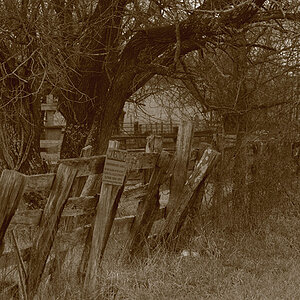
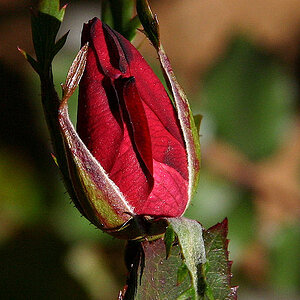

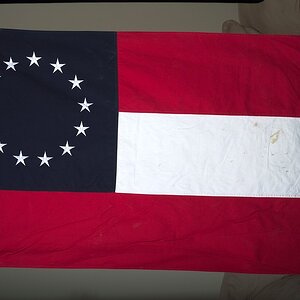
![[No title]](/data/xfmg/thumbnail/30/30868-01a498267fd96ce5b2d98347458d3903.jpg?1619734486)
